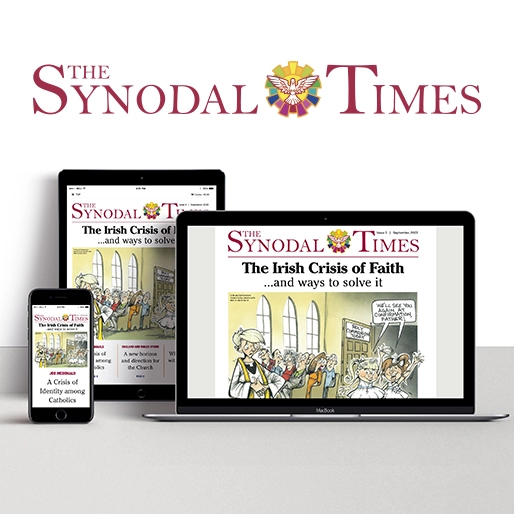The first Christmas story to be written was probably Matthew’s. It would be fair to say that the evangelist (whoever he was) would be very surprised at how his work features in the lives of today’s Christians.
The notion of the nativity play would certainly have been alien to him and the idea that his narrative, full as it is of sex and violence, political scheming and duplicity would have misty eyed parents tearing up as their children stumble their way through the troubled beginning of the life of Jesus of Nazareth would no doubt leave him gobsmacked and wondering what had happened to his story!
So maybe it’s time to rescue the narrative – cut it adrift from the primary school pageant and let Matthew talk to us as adults about what was in his mind when he set about putting pen to papyrus for his first readers.
At the outset it is essential to take on board the fact that the four evangelists were not historians in our modern sense of the word. They were primarily persuaders! That assertion makes some people nervous and they respond with, “so you mean it didn’t happen?”
The answer to that is that we must understand that the gospels and indeed all of Scripture requires that we recognise that the authors are human beings of their time using their skills and talents and the literary techniques at their disposal to communicate a message.
There is no magic here just a human process in which people of faith respond to what is going around them believing in the guiding inspiration of the Holy Spirit. Their way of presenting the truth is not limited to the reporting of facts!
Agreement
So, what do we know about Matthew and his audience? There is general agreement among scholars that Matthew wrote his account of the life of Jesus after becoming familiar with what Mark had written. Mark’s was a short story that made no mention of the nativity.
He focused on Jesus’ adult life and his mission to proclaim the reign of God. Mark wrote the story based on the traditions he had received, both oral and written and he pulled those traditions together into a narrative that would help his readers to come to terms with the outcome of Jesus’ life – the fact that this person whom they proclaim as God’s anointed (messiah) died alone and screaming on a cross!
This was the strange paradox for the first communities of Christians that amounted to a scandal for their contemporaries. How can you speak of God being at work through somebody whose life ends in rejection and apparent failure?
Matthew’s Christians felt this question in a particularly acute way. They were probably part of a community living in the large and important city of Antioch. They were mostly Jews who had come to faith in Christ but now they are under pressure because their fellow Jews are challenging their assertions about Jesus, who he was and what he has done.
Indeed, these Jewish Christians are being branded as heretics, leading others astray by daring to assert that a crucified rabbi from Galilee could possibly be the Messiah and the fulfilment of Jewish hopes.
They are also in breach of the traditions of their people by associating with Gentiles (non-Jews) and welcoming them into their community. We have here all the ingredients for a crisis of faith. What if this is true? What if Jesus is just another deluded Jew who fell foul of the Jewish and Roman authorities?
This is the scenario Matthew addresses. He writes his story using sources both oral and written (one of which is the Gospel of Mark) and he sets about affirming the faith his community has embraced by demonstrating how Jesus, in his life, death and resurrection, is truly Emmanuel (God with us).
Matthew shows how God has gone beyond their wildest imaginings by demonstrating that Jesus’ proclamation of the Kingdom of God is the perfect embodiment of the loving mercy that lies at the heart of their Jewish traditions.
Birth story
So how does Matthew do that? He begins with a birth story but from the outset shows that the birth of this child is to be understood against the backdrop of the deeply troubled history of the chosen people.
The first verses of his Good News begin with a genealogy. The TV phenomenon “Who do you think you are” shows that even today we are fascinated by who came before us and how their story might impinge on ours.
So, in this very structured account of Jesus’ ancestors, Matthew reminds his alert adult readers that their history as a chosen people is full of scandal. His mention of four women in a list that is usually peopled only by men immediately challenges them to realise that God works through all the choices people make.
These women are all outsiders and yet they are crucial to the story of the chosen people and how God is at work in and through human weakness. He then connects the birth of Jesus to this genealogy by another scandal.
A betrothed woman is pregnant but not by her chosen husband! Yet her child is the one who will save his people from their sins, he is the Emmanuel spoken of in the prophets. At his birth, as in the stories of other great heroes of the time (Alexander the Great, Augustus Caesar) a sign in the heavens is an indicator that this is no ordinary child.
This sign brings seekers of wisdom who are not Jewish to pay homage, a pointer to what is to come decades later when the Gentiles join the church.
Controversially the Jewish authorities represented by King Herod and the scribes are not disposed to welcome this child and so his life is in danger from the beginning. Indeed, dreadful violence is visited on the innocent as it will be on Jesus and his followers in subsequent generations. Yet the child and his family are guided through the turmoil to live in Nazareth in Galilee where years later he will begin his scandalous mission.
Invitation
With this opening story Matthew is inviting his readers to consider how God works through all the circumstances of life, even the most unpromising, to bring about his purposes. This is precisely what will happen in the adult life of Jesus who will pay the ultimate price for challenging people to recognise that what God wants is mercy not sacrifice (Matt 9:13).
Jesus’ work of teaching, healing and reaching out to the margins goes to the core of who God is and does so in a way that challenges our certainties and calls us to think again about what it means to live by faith.
In every generation we are called to respond to the times in which we live and to recognise that God, through the Spirit of the risen Christ, is inviting us to trust that he is with us as we seek new ways of witnessing to the power of the Gospel.
This Christmas as we continue on the synodal path Matthew’s account of the birth of Jesus is a reminder to us that we are part of a long history of people who had to set aside their certainties in order to recognise how God is at work among them. This narrative is not child’s play –it is in fact a serious call to grow up!
Sean Goan is Coordinator of Spiritan Mission Ireland. He taught and was chaplain in Blackrock College. Active in adult faith- development work, he is a founder-member of Tarsus Scripture School.



